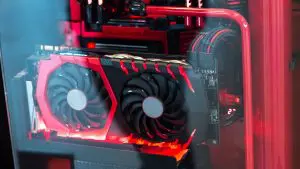One of the first practical lessons that electronic-circuit designer learn is to be aware of power-rail voltage drop, commonly called “IR drop,” which is the simple product of current and resistance in the printed-circuit board (PCB) track, wire, or larger cable. As currents increase to tens of amps and much higher, the IR-drop problem become more acute. Even a modest 50 mΩ of … [Read more...]
Forced-Air Cooling: Should You Push or Pull?
As much as we’d prefer to be able to use just unforced, natural convection cooling, many designs and installations simply cannot be cooled adequately by the low level and uncertainty of airflow that this low-cost, reliable approach offers. Instead, it’s very common to use one or more fans to force the air at a known volume and velocity through the enclosure or chassis … [Read more...]
Keeping Cool When You are Heading to the Sun
The Parker Solar Probe is defying common sense and pushing the limits of thermal performance via innovative design as it loops and approaches to within just a few million kilometers from our Sun. Thermal management in outer space is hard, that’s not news. Even after the heat has been conveyed by conduction to the outer surface of the spacecraft, there’s only radiation as a … [Read more...]
What…Use Lasers and LEDs for Cooling?
In a recent blog “Some New Cooling Ideas are Needed Here,” I suggested (hoped?) that someone would figure out how to leverage the thermal laws of physics to devise innovative cooling systems which go beyond widely used, conventional techniques of conduction, convection, and radiation. The reason for looking beyond these solutions is that they seem to have reached a limit as to … [Read more...]
Some New Cooling Ideas are Needed Here
In the 1920s, the field of physics was in disarray. The reason was that many careful observations and experimental data could only be explained by conflicting theories; for example, some proved that light was a wave, while others provided it had a particle-like nature. Other experiments, such as those in black-body radiation or the photoelectric effect, could not be explained … [Read more...]










